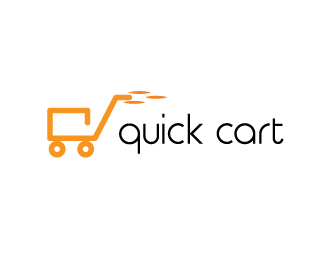
In this tutorial, we will show you how to install and configuration of Quick.Cart on your CentOS 7. For those of you who didn’t know, Quick.Cart is a free and open-source shopping cart script written in PHP. Quick.Cart is a very simple, but yet powerful shopping card and it can be installed and run on almost all Linux distributions. It does not require an SQL database and can be installed in less than 10 minutes.
This article assumes you have at least basic knowledge of Linux, know how to use the shell, and most importantly, you host your site on your own VPS. The installation is quite simple and assumes you are running in the root account, if not you may need to add ‘sudo‘ to the commands to get root privileges. I will show you the step-by-step installation Quick.Cart shopping cart on a CentOS 7 server.
Prerequisites
- A server running one of the following operating systems: CentOS 7.
- It’s recommended that you use a fresh OS install to prevent any potential issues.
- An active internet connection.
- SSH access to the server (or just open Terminal if you’re on a desktop).
- A
non-root sudo useror access to theroot user. We recommend acting as anon-root sudo user, however, as you can harm your system if you’re not careful when acting as the root.
Install Quick.Cart on CentOS 7
Step 1. First, let’s start by ensuring your system is up-to-date.
yum clean all yum -y update
Step 2. Install the LAMP server.
A CentOS 7 LAMP stack server is required. If you do not have LAMP installed, you can follow our guide here. Also, install the required PHP modules:
yum install php-mysql php-gd php-ldap php-xml php-xmlrpc php-mbstring php-mcrypt curl zlib libtool-ltdl php-pdo
Step 3. Installing Quick.Cart.
The first thing to do is to go to Quick.Cart’s download page and download the latest stable version of Quick.Cart, At the moment of writing this article it is version 6.7:
wget http://opensolution.org/download/home.html?sFile=Quick.Cart_v6.7.zip
Unpack the Quick.Cart archive to the document root directory on your server:
mkdir /var/www/html/quickcart unzip home.html\?sFile\=Quick.Cart_v6.7.zip -d /var/www/html/quickcart
We will need to change some folders permissions:
chown apache:apache -R /var/www/html/quickcart/
Step 4. Configuring Apache web server for Quick.Cart.
We will create Apache virtual host for your Quick.Cart website. First, create ‘/etc/httpd/conf.d/vhosts.conf’ file using a text editor of your choice:
nano /etc/httpd/conf.d/vhosts.conf IncludeOptional vhosts.d/*.conf
Next, create the virtual host:
mkdir /etc/httpd/vhosts.d/ nano /etc/httpd/vhosts.d/yourdomain.com.conf
Add the following lines:
<VirtualHost YOUR_SERVER_IP:80> ServerAdmin webmaster@yourdomain.com DocumentRoot "/var/www/html/quickcart/" ServerName yourdomain.com ServerAlias www.yourdomain.com ErrorLog "/var/log/httpd/yourdomain.com-error_log" CustomLog "/var/log/httpd/yourdomain.com-access_log" combined <Directory "/var/www/html/quickcart/"> DirectoryIndex index.html index.php Options FollowSymLinks AllowOverride All Require all granted </Directory> </VirtualHost>
Save and close the file. Restart the apache service for the changes to take effect:
systemctl restart httpd.service
Step 5. Accessing Quick.Cart Web UI.
Quick.Cart will be available on HTTP port 80 by default. Open your favorite browser and navigate to http://yourdomain.com or http://server-ip and complete the required steps to finish the installation. To access the administrator panel, add ‘admin.php’ (http//yourdomain.com/admin.php) at the end of the URL. If you are using a firewall, please open port 80 to enable access to the control panel.
Congratulations! You have successfully installed Quick.Cart. Thanks for using this tutorial for installing Quick.Cart shopping cart on CentOS 7 system. For additional help or useful information, we recommend you to check the official Quick.Cart website.